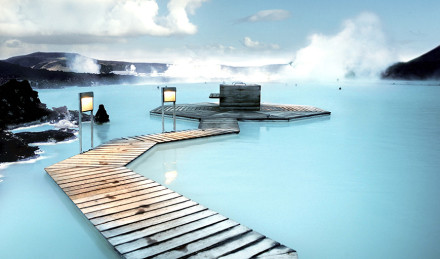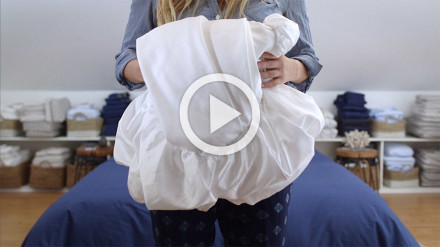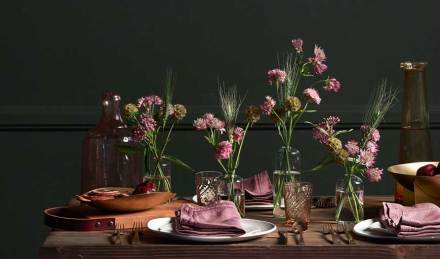You don’t need to tell us to take a bath – we already know the virtues of a good soak in the tub. A little hot water, a few drops of essential oil and twenty minutes can help with a good night’s sleep, steam away the sniffles and generally set our mood to totally chill. With the addition of our classic towel collection, we have more excuses to opt for the tub than ever before.
While our typical bathing ritual is a solo endeavor, in many cultures public baths are a centuries-old tradition and an important part of social life. Let’s take a dip — everywhere from ancient Rome to modern Japan — and ask ourselves: Is taking a bath better together?
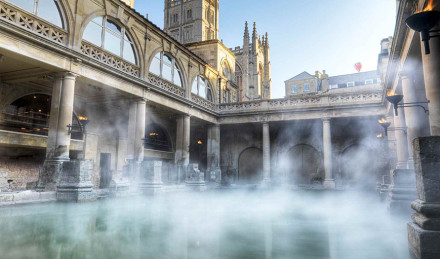
Roman Empire
For ancient Romans, the thermae public baths were far more than a place to rinse off the day. They served as important social hubs, housing spaces where citizens could feast, exercise, conduct business and even browse library books or take in a poetry reading. The bathing ritual itself was all in a day’s routine – though hardly low-maintenance by modern standards. Citizens started with a trip to the gymnasium for a workout followed by a head-to-toe anointment of oil. Next up was a succession of baths. First a cold plunge, then a body temperature tepidarium and finally a super hot soak before an attendant came to assist with drying and dressing. As the Romans expanded their empire, they built elaborate complexes from England to Istanbul and beyond.
Roman Empire
For ancient Romans, the thermae public baths were far more than a place to rinse off the day. They served as important social hubs, housing spaces where citizens could feast, exercise, conduct business and even browse library books or take in a poetry reading. The bathing ritual itself was all in a day’s routine – though hardly low-maintenance by modern standards. Citizens started with a trip to the gymnasium for a workout followed by a head-to-toe anointment of oil. Next up was a succession of baths. First a cold plunge, then a body temperature tepidarium and finally a super hot soak before an attendant came to assist with drying and dressing. As the Romans expanded their empire, they built elaborate complexes from England to Istanbul and beyond.
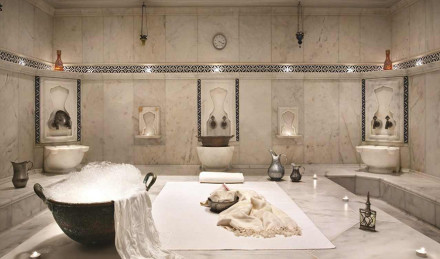
Turkey
The Turkish hammam sprang from imperial Roman thermae, incorporating elements of the bathing ritual including progressively heating pools and common areas for socialization. The hammam also served an important role in preparing for Islamic prayer, as it is customary to perform an ablution — or ritual cleansing — before attending services. Known for the grandeur of their architecture, hammams were a point of fascination for medieval scholars, and many of the centuries-old complexes are still welcoming bathers in modern Istanbul. We have to admit, lying on a marble slab massage table under a tiled ceiling sounds sublime, regardless of the era. Put it on our bath time bucket list.
Turkey
The Turkish hammam sprang from imperial Roman thermae, incorporating elements of the bathing ritual including progressively heating pools and common areas for socialization. The hammam also served an important role in preparing for Islamic prayer, as it is customary to perform an ablution — or ritual cleansing — before attending services. Known for the grandeur of their architecture, hammams were a point of fascination for medieval scholars, and many of the centuries-old complexes are still welcoming bathers in modern Istanbul. We have to admit, lying on a marble slab massage table under a tiled ceiling sounds sublime, regardless of the era. Put it on our bath time bucket list.

Russia
For a slightly more aggressive take on bath time, take notes from the Russian tradition and enter the banya. Hanging out in this traditional sauna means enduring temperatures that hover around 200 degrees — so hot that regulars often wear special felt hats to prevent overheating. A post-sweat cool down in the old country might entail a jump in the lake or roll in the snow, though today an indoor pool makes an adequate replacement. One tradition that hasn’t changed: The platza. A circulation-pumping ritual that takes place between the schvitz and the cold soak, the platza is a rough scrubbing with birch, white oak or eucalyptus leaves and branches, said to improve skin tone and detoxify the body. A popular male bonding experience, the banya lives on not only in Russia but also in places like New York’s 124-year old Russian Turkish Baths in the East Village — which draws old school bathers and hipsters alike. More on that here.
Russia
For a slightly more aggressive take on bath time, take notes from the Russian tradition and enter the banya. Hanging out in this traditional sauna means enduring temperatures that hover around 200 degrees — so hot that regulars often wear special felt hats to prevent overheating. A post-sweat cool down in the old country might entail a jump in the lake or roll in the snow, though today an indoor pool makes an adequate replacement. One tradition that hasn’t changed: The platza. A circulation-pumping ritual that takes place between the schvitz and the cold soak, the platza is a rough scrubbing with birch, white oak or eucalyptus leaves and branches, said to improve skin tone and detoxify the body. A popular male bonding experience, the banya lives on not only in Russia but also in places like New York’s 124-year old Russian Turkish Baths in the East Village — which draws old school bathers and hipsters alike. More on that here.
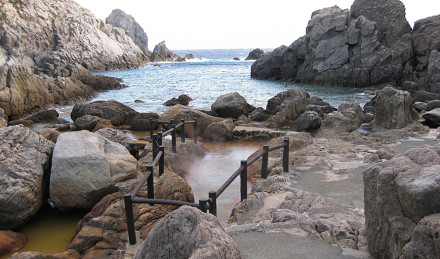
Japan
If you want to pass on the platza for something a little more zen, head east. The volcanic geology of Japan provides an abundance of hot springs (onsen) that draw both residents and tourists. Various springs are known for specific minerals’ therapeutic benefits, and a trip to a country onsen can be prescribed for skin ailments and muscle aches. And then there’s what the Japanese call adaka no tsukiai – or “naked communion.” Rooted in the belief that physical intimacy begets emotional bonding and goodwill, this turn of phrase may very well explain the universal appeal of the public bath — though it’s more about the “communion” than the “naked.” In a place with no pressure to do anything but sit, soak and socialize, the bonds made in the bath are extra special.
Japan
If you want to pass on the platza for something a little more zen, head east. The volcanic geology of Japan provides an abundance of hot springs (onsen) that draw both residents and tourists. Various springs are known for specific minerals’ therapeutic benefits, and a trip to a country onsen can be prescribed for skin ailments and muscle aches. And then there’s what the Japanese call adaka no tsukiai – or “naked communion.” Rooted in the belief that physical intimacy begets emotional bonding and goodwill, this turn of phrase may very well explain the universal appeal of the public bath — though it’s more about the “communion” than the “naked.” In a place with no pressure to do anything but sit, soak and socialize, the bonds made in the bath are extra special.
